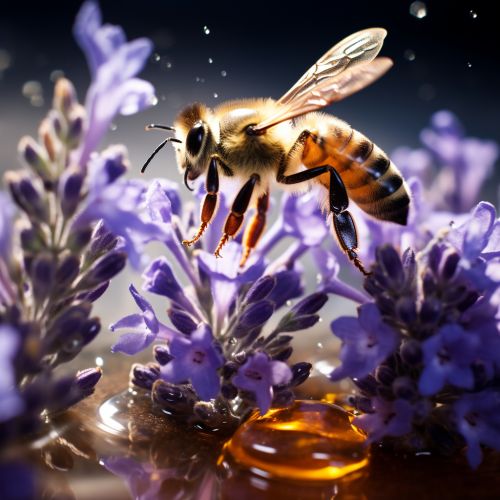Biological Mechanisms of Bee Communication
Introduction
The complex world of bees is marked by a sophisticated system of communication that is primarily based on chemical signals, known as pheromones, and a series of movement patterns, famously known as the bee dance. This intricate system of communication plays a crucial role in the survival and success of the bee colony, influencing behaviors such as foraging, mating, and defense.


Chemical Communication
Chemical communication in bees is primarily facilitated through the use of pheromones, which are chemical substances produced and released into the environment by an individual that affects the behavior or physiology of others of the same species.
Pheromones
Pheromones are the primary means of communication among bees. They are produced by various glands located throughout the bee's body and are used to communicate a wide range of information.


Queen Pheromones
The queen bee produces a variety of pheromones, collectively known as the Queen Mandibular Pheromone (QMP). The QMP serves multiple functions within the colony, including suppression of worker bee ovary development, attraction of drones during mating flights, and promotion of worker bee foraging behavior.
Worker Pheromones
Worker bees also produce pheromones, which play a crucial role in colony organization and defense. The Nasonov gland, located at the rear of the worker bee's abdomen, produces a pheromone that is used to guide other bees to nectar sources, water, or to a new nest site.
Drone Pheromones
Drones, the male bees, produce pheromones that attract virgin queen bees for mating. These pheromones are released during the drone's mating flight, attracting virgin queens from a distance.
Physical Communication
In addition to chemical communication, bees also use physical movements to communicate, the most famous of which is the bee dance.


Waggle Dance
The waggle dance is a form of communication used by bees to convey information about the location of food sources. The dance involves a series of figure-eight movements, with the direction and duration of the "waggle" phase indicating the direction and distance of the food source.
Round Dance
The round dance is another form of dance communication used by bees, typically to indicate a food source that is close to the hive. Unlike the waggle dance, the round dance does not provide directional information.
Auditory Communication
Bees also use sound as a means of communication. The most well-known sound produced by bees is the buzzing sound, which is created by the rapid movement of their wings. However, bees also produce a variety of other sounds, such as the "piping" sound produced by queen bees, which is thought to signal readiness for a swarm to depart the hive.


Conclusion
The communication systems of bees are complex and multifaceted, involving a combination of chemical, physical, and auditory signals. These communication mechanisms are vital for the survival and success of the bee colony, influencing a wide range of behaviors and activities.
